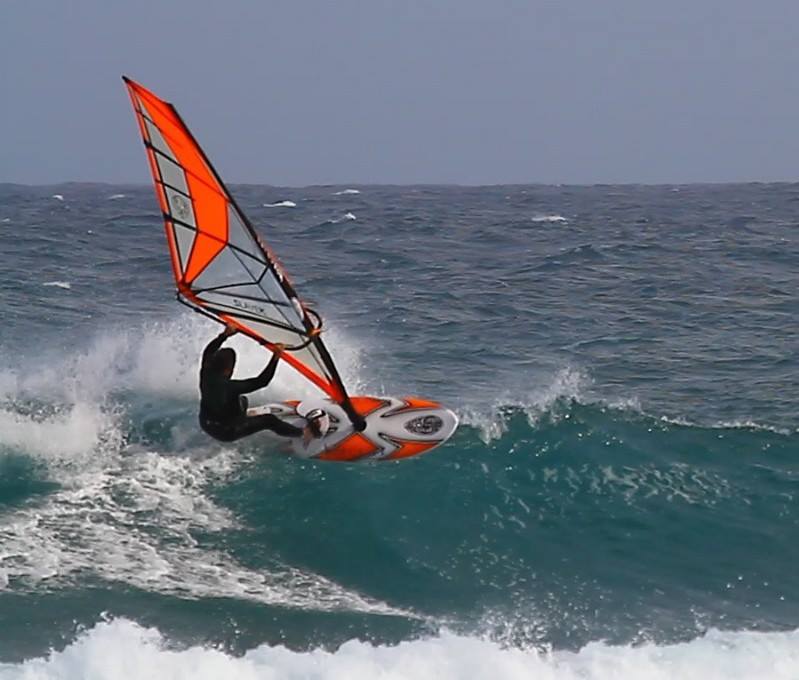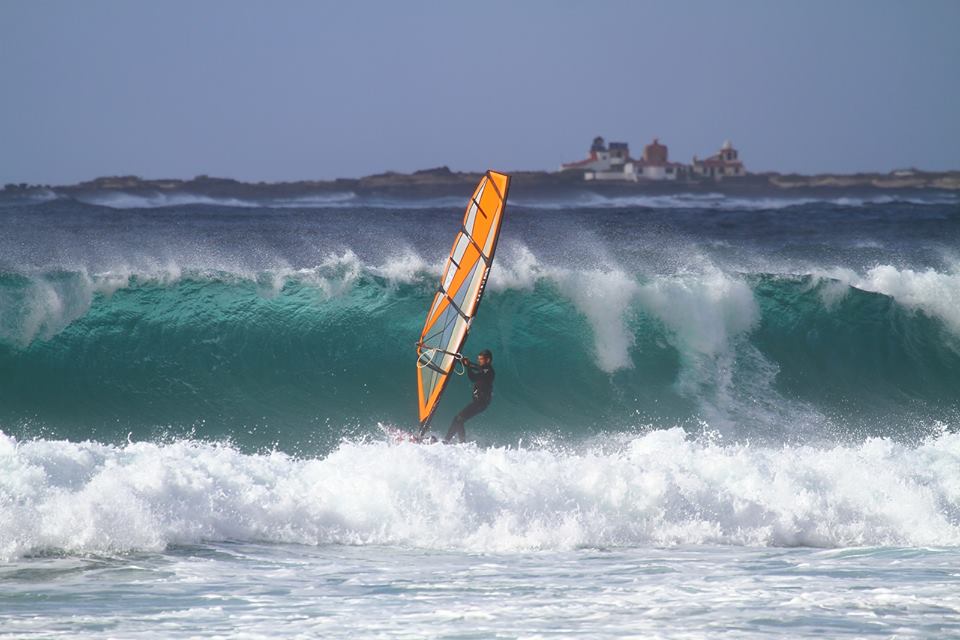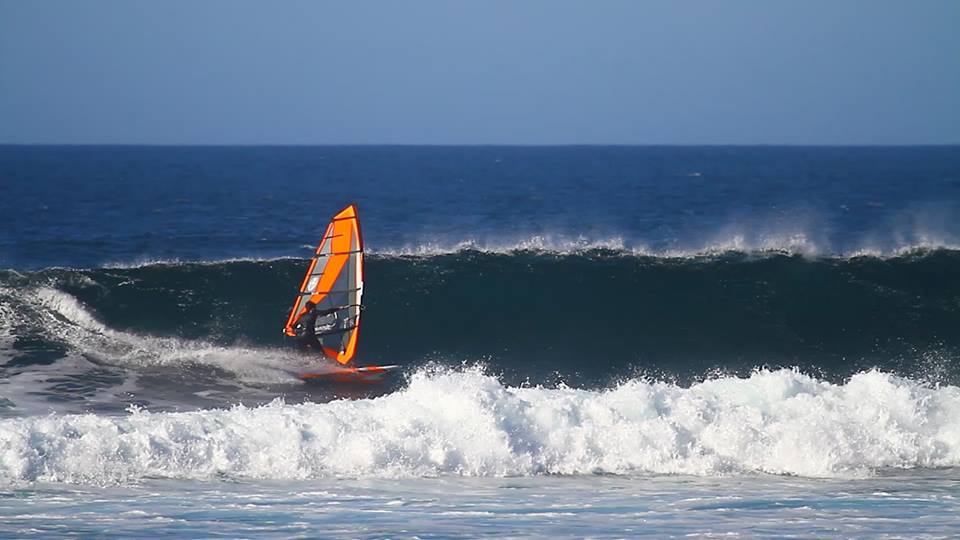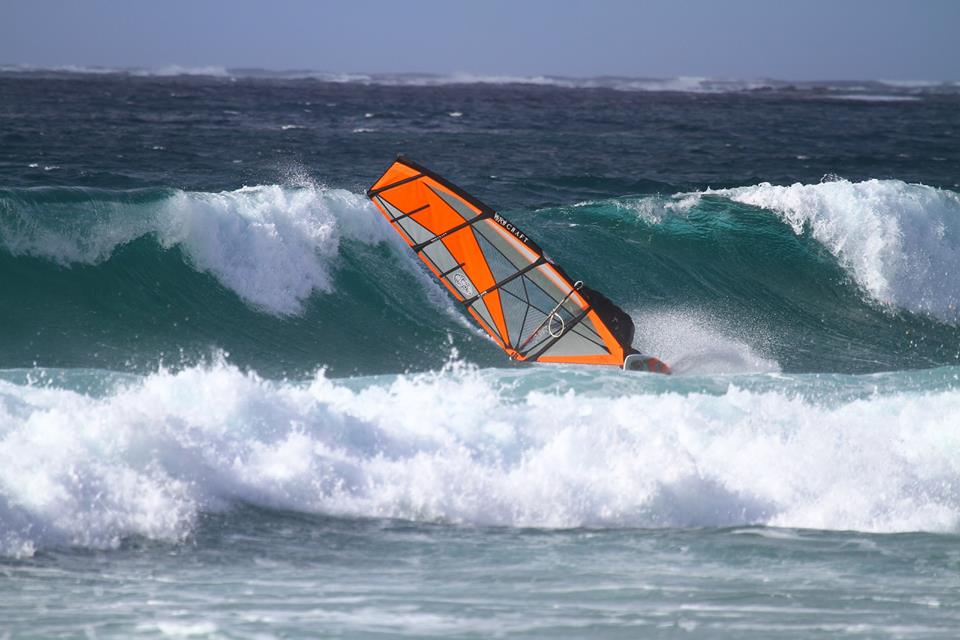As windsurfers we’re taught to be comfortable in both right and left mode from the off – if this wasn’t the case then we’d have no way of getting back to the beach, or in fact leaving it. It’s probable one of the few sports in the world where there’s necessity to be able to ride both ways. Yet over time, as we improve, we start to gravitate towards one type of wind direction bias. Whether this be dictated by frequenting the same spot, with similar conditions, or it simply being a head thing that suggests we only try certain moves on one particular tack.
Of course there are some global destinations, such as Witchcraft’s home of Fuerteventura, where winds blow from both directions regularly. This means any windsurfer maximising time on the water will learn to sail both tacks. Although there are still no doubt riders here who may sniff at certain conditions, missing out on a lot of quality TOW if they don’t go for it. We’ve even notice it with our Facebook likes, port tack sailors will like pictures with port tack conditions more often than starboard tack pictures and vice versa. Travelling windsurfers may also prefer to visit holiday destinations with their preferred tack rather than their preferred type of conditions and frequency. Beautiful long clean waves are beautiful long clean waves regardless of direction are thy not?
Before long you suddenly realise that having stomped down the fundamentals of windsurfing in both directions, as a newbie/intermediate, you’ve become a one tack sailor as a more advanced rider. In fact, the better some sailors get the more they opt for specific spots with the same wind direction. Possibly ego comes into play the better a windsurfer you are. After all, if you’re the stand out rider at your local beach, with a vast array of tricks and hits on one tack, then it’s unlikely you’ll want to drop in the pecking order by switching to the opposite side where you’ll crash more or perhaps not even execute tricks at all. But then again, why do you windsurf, for others or yourself? To be a fully rounded windsurfer it’s important to embrace all weathers and every forecast Mother Nature bowls our way. It may feel odd to loop on port, for instance, but that’s exactly what should be the goal. We know of some sailors who purposefully try the most complex of manoeuvres on their bad side to spice things up. They even would travel to destinations featuring their bad tack to improve and open up more possibilities. There’s nothing worse than becoming stagnant and with windsurfing it’s easy to fall into a routine and, dare we say it, become bored. There are a bunch of things you can do to ramp up your windsurfing – switching tacks and trying moves on your wrong side being one such tactic.
We do, however, appreciate it’s hard to achieve the above in some locations. Take the UK’s south coast for instance. Here the predominant wind direction is from the west (right). There are of course days when it blows alternate angles but these aren’t always easy to score windsurfing sessions with. East winds are lighter weight, for instance. If it’s clocking force six then chances are it won’t actually feel like this on the water and you’ll need to rig bigger. In cases of marginal east winds on the UK’s south coast it might simply be nothing more than a kitten’s sneeze, which is in complete contrast to standard westerly days where the wind (full of moisture) is heavier/denser and therefore more powerful.
There will be days, however – wherever you find yourself – when conditions turn on from the so called ‘evil tack’. Our advice is to embrace these blows, get amongst it, learn something new and be a more rounded windsurfer. After all, you’ll not only be clocking more water miles you’ll also be increasing your skill set which can be fun in its own right.








